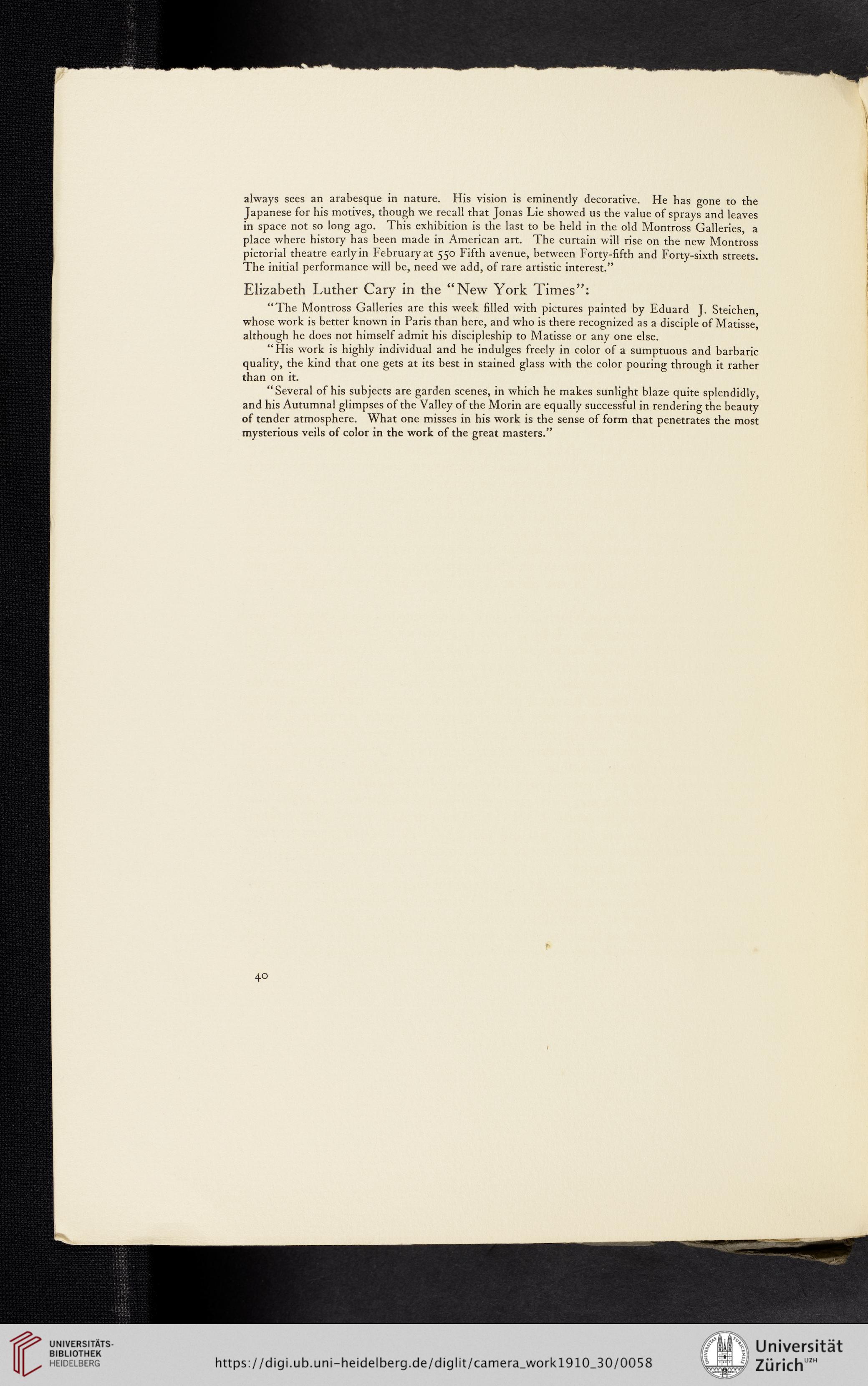A manually made transcription or edition is also available for this page. Please change to the tab "transrciption" or "edition."
always sees an arabesque in nature. His vision is eminently decorative. He has gone to the
Japanese for his motives, though we recall that Jonas Lie showed us the value of sprays and leaves
in space not so long ago. This exhibition is the last to be held in the old Montross Galleries a
place where history has been made in American art. The curtain will rise on the new Montross
pictorial theatre early in February at 550 Fifth avenue, between Forty-fifth and Forty-sixth streets.
The initial performance will be, need we add, of rare artistic interest.”
Elizabeth Luther Cary in the “New York Times”:
“The Montross Galleries are this week filled with pictures painted by Eduard J. Steichen,
whose work is better known in Paris than here, and who is there recognized as a disciple of Matisse,
although he does not himself admit his discipleship to Matisse or any one else.
“His work is highly individual and he indulges freely in color of a sumptuous and barbaric
quality, the kind that one gets at its best in stained glass with the color pouring through it rather
than on it.
“Several of his subjects are garden scenes, in which he makes sunlight blaze quite splendidly,
and his Autumnal glimpses of the Valley of the Morin are equally successful in rendering the beauty
of tender atmosphere. What one misses in his work is the sense of form that penetrates the most
mysterious veils of color in the work of the great masters.”
40
Japanese for his motives, though we recall that Jonas Lie showed us the value of sprays and leaves
in space not so long ago. This exhibition is the last to be held in the old Montross Galleries a
place where history has been made in American art. The curtain will rise on the new Montross
pictorial theatre early in February at 550 Fifth avenue, between Forty-fifth and Forty-sixth streets.
The initial performance will be, need we add, of rare artistic interest.”
Elizabeth Luther Cary in the “New York Times”:
“The Montross Galleries are this week filled with pictures painted by Eduard J. Steichen,
whose work is better known in Paris than here, and who is there recognized as a disciple of Matisse,
although he does not himself admit his discipleship to Matisse or any one else.
“His work is highly individual and he indulges freely in color of a sumptuous and barbaric
quality, the kind that one gets at its best in stained glass with the color pouring through it rather
than on it.
“Several of his subjects are garden scenes, in which he makes sunlight blaze quite splendidly,
and his Autumnal glimpses of the Valley of the Morin are equally successful in rendering the beauty
of tender atmosphere. What one misses in his work is the sense of form that penetrates the most
mysterious veils of color in the work of the great masters.”
40



